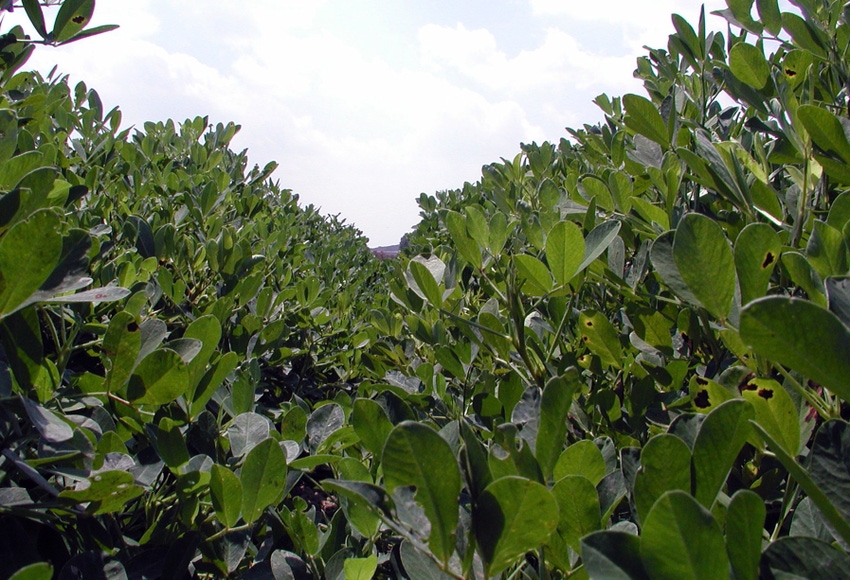
There is urgency now in questions about diseases in the fields, urgency that sometimes borders on desperation.
During August, my phone buzzed from early morning to late at night with requests for management recommendations on target spot, areolate mildew, boll rot, white mold, leaf spot, northern corn leaf spot and disease-like symptoms that I couldn’t identify.
One consultant in southwestern Georgia told me, “Bacterial blight isn’t even on my radar anymore, but the combination of target spot, boll rot and wet weather could bring 300-400 pound yield losses to the cotton crop, which would be devastating.”
A grower in eastern Georgia lamented, “Bob, I have already put between six and 11 ounces of azoxystrobin on my cotton crop and the areolate mildew keeps moving up the plant. I am not sure I will be able to keep any of the leaves on the plants; I hope the bolls open.”
DONE THAT
A county agent called me saying, “Everything looked good in the field until he (the grower) pulled up a few plants to check maturity. That’s when he found underground white mold, something we never expected in such a wet year. What does he do?”
I spend much of August and September wishing that I had more data when making recommendations and second-guessing myself, much like a coach sending in a play on 3rd and long, late in the fourth quarter with his team down by a touchdown. As harvest approaches, the questions I get are often along the lines of, “I’ve done that, I’m seeing this, so what do I do now?”
“What do I do now?” depends on if the grower is either doing well and is trying to finish out the season or if things are not going well and the grower may be looking for a Hail Mary play. Late-season disease management recommendations are more difficult than ones made earlier in the season. Early-season recommendations are made to prevent, or at least minimize, damage and are often based on numerous season-long field trials. Late-season recommendations are typically needed when disease is in the field and growers are looking for a best option
Today, there are some issues for which I simply don’t have enough data to make as refined of a decision as I would like.
Areolate mildew of cotton is caused by the fungus Ramularia areola. Typically restricted to southeastern Georgia, in 2017 and 2018 this disease has been found across the Coastal Plain and beyond. Areolate mildew can lead to rapid defoliation of the cotton crop but it can be controlled, if caught early enough, with the same fungicides used for target spot. It is not clear how much yield is at risk or how much can be protected with a fungicide program. I believe that if the crop is within a month of when a farmer would defoliate, then a fungicide is not needed. If there more than a month left in the season, and the disease is not yet caused significant defoliation, then delaying a significant leaf drop with a fungicide may be worthwhile.
Northern corn leaf spot, caused by Bipolaris zeicola, is raising significant concern among growers with late-planted corn, whether planted for silage, grain or “corn mazes.” My experience is that the intensity of the northern corn leaf spot will subside as the plants continue to grow, and that a fungicide is not needed. However, I have never seen this much disease on young corn. Should growers apply fungicides like those used for northern and southern corn leaf blights? I don’t think so, but I don’t know so. I can’t disagree with some growers who have decided it best to be cautious and applied fungicides.
MAKING THE SWITCH
Finding leaf spot and white mold in a field brings concern to peanut farmers who then ask about switching to “more effective” fungicide programs. Changing fungicides may be the best decision, but I ask growers to consider a few basic questions before they do.
First, consider the extent of the disease and the limitation of EVERY management program. This field season has been perfect for leaf spot and white mold and some level of disease is largely unavoidable. A little leaf spot later in the season and scattered “hits” of white mold, limited to single plants, may be all any program could provide; good control but not perfect. However, if it is severe or the spread of white mold is too extensive, than no fungicide will slow the onslaught, and it may even be necessary to hasten harvest dates to minimize harvest losses. I believe “switching” fungicides is warranted if 1) there is clearly a better choice and 2) there is time left in the season where the disease will make a difference.
Late-season disease recommendations are among the most difficult parts of my job; where growers, Extension agents and consultants are making decisions, costly decisions, for which an answer is not clear. It’s at times like this that lyrics from a Kenny Chesney song come to mind: “People say they wouldn’t change a thing, even if they could, oh but I would….” I hope, and all Extension specialists hope, we get it right when making tough recommendations.
About the Author(s)
You May Also Like






